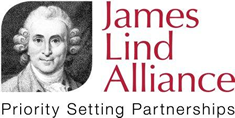Example
Here are some examples of how PSPs have promoted the survey and gathered responses:
The Obstructive Sleep Apnea PSP in Canada wrote an update for the JLA website about how they engaged with residents in the Saskatchewan province, which has a large number of rural and remote communities, as well as a number of Indigenous communities and two city centres to consider.
A news item from the Digital Technology for Mental Health PSP explains their methods of collecting responses, in addition to the online survey.
A news item from the Heart Surgery PSP explains how they gathered responses.
The Type 2 Diabetes PSP created a video to explain the PSP and promote the survey.
The Occupational Therapy PSP also produced a video. That PSP also produced guidance on how to have facilitated discussions to gather responses. You can also read their update on reaching people with lived experience.
The Emergency Medicine PSP launched its survey at the Royal College of Emergency’s 2015 annual conference. See the video at www.jla.nihr.ac.uk/priority-setting-partnerships/emergency-medicine.
The Chief Social Worker for Adults in England recorded videos about why it was important to contribute to the survey for the Adult Social Work PSP. This PSP also made an easy read version of the survey.
The approach taken by the Type 2 Diabetes PSP to engage and involve people from Black, Asian and Minority Ethnic (BAME) groups is described in an article from the PSP.
A toolkit for increasing the participation of BAME groups in health and social care research includes many lessons that are applicable to priority setting.

